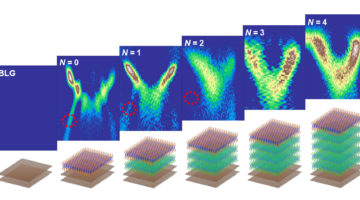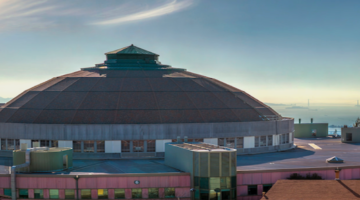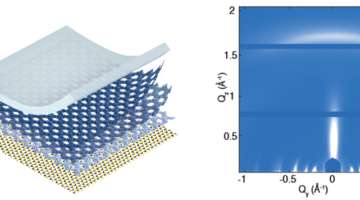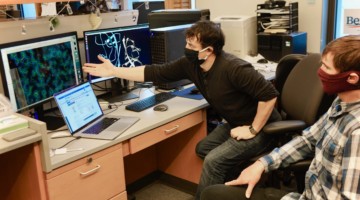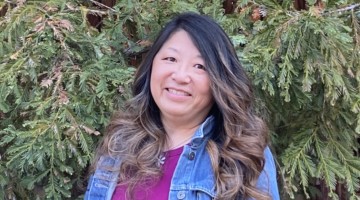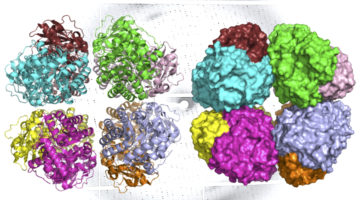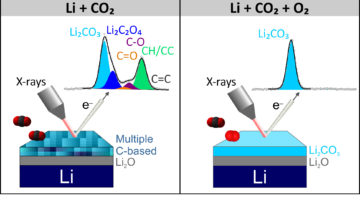ALS studies highlighted interactions that can occur between technologically intriguing 2D materials and the substrates that physically support them. The results provide important insights into the issue of non-negligible interlayer coupling and demonstrate the potential for tuning single-layer properties through substrate engineering. Read more »
A Detailed Look Inside Tsetse Flies
To better understand the unique reproductive biology of tsetse flies, which are carriers of the parasites that cause a deadly infection known as African sleeping sickness, researchers explored the intact organs and tissues of tsetse flies using a powerful 3D x-ray imaging technique at Berkeley Lab’s Advanced Light Source. Read more »
Materials from Town Hall on Shutdown Schedules Now Available
On January 26, the ALS held a town hall on the schedule for upcoming long shutdowns. The event provided up-to-date information on the schedule, explained the motivations behind decisions, and discussed principles and strategies for future decision-making. Slides and a recording from the event, as well as an FAQs document, are posted to the ALS website. Read more »
Johanna Nelson Weker, Users’ Executive Committee Chair
This year’s Users’ Executive Committee chair first used synchrotrons as a grad student and loved the experience so much she eventually became a beamline scientist at SSRL. She’s excited to work closely with the user community during the ALS Upgrade and is well versed in post-beamtime food options in Berkeley. Read more »
Stacking the Deck for Custom-Built Hybrid Materials
Researchers fabricated an electronically coupled heterostructure from a novel semiconducting 2D polymer and a 2D transition metal dichalcogenide. Dramatic optical and electronic changes emerged as polymer thickness decreased, underscoring the potential for the discovery of emergent phenomena in studies of hybrid heterostructures. Read more »
A 1-Atom-Deep Look at a Water-Splitting Catalyst
X-ray experiments revealed an unexpected transformation in a single atomic layer of a material that contributed to a doubling in the speed of a chemical reaction—the splitting of water into hydrogen and oxygen gases. This process is a first step in producing hydrogen fuel for applications such as electric vehicles powered by hydrogen fuel cells. Read more »
The Odd Structure of ORF8: Scientists Map the Coronavirus Protein Linked to Immune Evasion and Disease Severity
Researchers determined the atomic structure of a coronavirus protein thought to help the pathogen evade and dampen response from human immune cells. Researchers determined the atomic structure of a coronavirus protein thought to help the pathogen evade and dampen response from human immune cells. Read more »
Janice Krueger, Senior Business Manager
Coming from the Office of the Chief Financial Officer, Janice Krueger is no stranger to the Laboratory. She’s excited to get closer to the science by joining the ALS community. Read on to see how she’ll stock her office when we get back on site. Read more »
Newly Discovered Photosynthesis Enzyme Yields Evolutionary Clues
Scientists have discovered a primitive form of rubisco, a photosynthesis enzyme that has helped shape life on Earth. Detailed information about its structure, determined using complementary techniques at the ALS, will help scientists understand how carbon-fixing organisms oxygenated the atmosphere and how modern plants evolved. Read more »
New Insights into Lithium-Metal Surface Reactions for Next-Generation Batteries
In this work, researchers studied how CO2 gas modifies the chemical composition of lithium-metal surfaces. A better understanding of the interactions between lithium and surrounding gases will help design stabilization strategies and move from lithium-ion technology to high-energy-density technologies based on lithium metal. Read more »
- « Previous Page
- 1
- …
- 18
- 19
- 20
- 21
- 22
- …
- 28
- Next Page »
